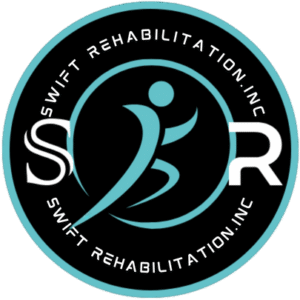Sleeping on the side often feels natural and cozy. Yet, for many people, it leads to nagging shoulder pain that disrupts sleep quality and daily comfort. The good news is that there are practical and effective solutions to shoulder pain from sleeping on the side. By making the right adjustments, practicing targeted exercises, and knowing when to seek professional help, you can ease discomfort and enjoy restful nights.
Common Causes of Shoulder Pain from Side Sleeping
Understanding the cause of your discomfort is the crucial first step toward finding relief. Shoulder pain can stem from various issues, including compressed nerves, inflamed tendons, or poor spinal alignment. One common contributing factor is side sleeping, which places added pressure on the rotator cuff and shoulder joint. This position may exacerbate pre-existing conditions such as bursitis, arthritis, or tendonitis.
Additionally, maintaining a single sleeping position for hours can restrict blood flow, leading to increased stiffness and discomfort upon waking. Recognizing these factors can help in developing strategies to alleviate shoulder pain and improve sleep quality.Learn more about Physical Therapy.
Proper Pillow and Mattress Adjustments
Getting comfortable sleep requires proper support for your head, neck, and shoulders, and that starts with the right pillow and mattress. Here are some appropriate adjustments-
A) Choosing the Right Pillow
The wrong pillow can make shoulder pain worse. A too-flat pillow leaves the head tilted downward, straining the neck and shoulders. On the other hand, a very thick pillow elevates the head unnaturally, causing shoulder compression. Select a medium-height pillow that fills the gap between your shoulder and neck, keeping the spine neutral.
B) Mattress Support Matters
A mattress that’s too soft allows the shoulder to sink deeply, while an overly firm mattress puts direct pressure on the joint. Instead, use a medium-firm mattress with some cushioning to distribute body weight evenly. Adding a memory foam topper can also help relieve direct shoulder pressure.

Shoulder-Friendly Sleep Positions
Here are some shoulder-friendly sleed positions that can help with shoulder pain from sleeping on the side-
1) Side-Sleeping with Pillows
Place a pillow under your top arm to reduce forward shoulder rolling. Another pillow between your knees helps align the spine and hips, reducing strain across the body. Hugging a soft cushion can also ease tension on the shoulder joint.
2) Alternatives to Strict Side Sleeping
If side sleeping continues to cause pain, try a semi-reclined position by elevating the upper body slightly with pillows. This reduces pressure on the shoulder and can also improve breathing. Alternating between the left and right sides throughout the night prevents overuse of one shoulder.
Targeted Stretches and Strengthening
Keeping your shoulders healthy requires a balance of mobility and strength. Gentle stretches can improve flexibility, while targeted exercises help support the joint and prevent future discomfort.
a) Gentle Mobility Stretches
- Pendulum swings – Lean forward, let your arm hang, and gently swing it in circles.
- Cross-body stretch – Pull one arm across your chest with the opposite hand, holding for 15–20 seconds.
- Doorway stretch – Place your arms on each side of a doorway and gently lean forward to open up the chest and shoulder muscles.
b) Strengthening Exercises for Support
- Shoulder blade squeezes – Sit upright and squeeze your shoulder blades together for 5 seconds.
- Wall angels – Stand against a wall, raise arms to form a “goalpost,” and slide them up and down slowly.
- Resistance band rows – Use a light resistance band to strengthen the back and shoulder stabilizers.
These exercises reduce stiffness, improve circulation, and build resilience against future discomfort.
Lifestyle Adjustments for Pain Relief
Shoulder pain at night is often worsened by daily routines and small habits we don’t think twice about. By making a few mindful changes, you can ease strain on your joints and promote deeper, more restorative sleep.
- Limit prolonged phone scrolling in bed, as it encourages poor posture.
- Stay hydrated to support joint health and muscle recovery.
- Maintain good posture during the day, since slouching can make shoulder pain worse at night.
- Apply heat or ice before bed to relax tight muscles or calm inflammation.
Small, intentional changes to your bedtime habits and daily posture can create a big difference in reducing shoulder pain. By combining lifestyle adjustments with consistent care, you set the stage for restful sleep and long-term shoulder health.

Seeking Professional Guidance
If pain persists despite home adjustments, professional care is essential. A licensed physical therapist can assess posture, mobility, and muscle balance to create a personalized plan. Clinics like Swift Rehabilitation Inc. specialize in tailored solutions, including physical therapy, occupational therapy, and home-based programs. Professional guidance ensures faster recovery, prevents recurring issues, and addresses underlying causes instead of just symptoms.
Conclusion
Finding the right solutions to shoulder pain from sleeping on the side takes a mix of adjustments, exercises, and lifestyle changes. By supporting your body properly, practicing targeted stretches, and knowing when to seek professional care, you can reduce discomfort and restore restful sleep. For dependable and personalized support, trust Swift Rehabilitation to help you on your journey toward pain-free nights.
FAQs
1. What is the best sleeping position to avoid shoulder pain?
Side sleeping with proper pillow support and alternating sides is best, but a semi-reclined position can also reduce pressure.
2. Which stretches are most effective for shoulder pain from side sleeping?
Pendulum swings, cross-body stretches, and shoulder blade squeezes provide relief and mobility.
3. How do I know if my mattress causes shoulder pain?
If your pain improves when sleeping elsewhere, or you feel pressure points, your mattress may be too soft or too firm.
4. When should I see a physical therapist for shoulder pain?
If pain lasts more than a week, disrupts sleep, or limits daily activity, professional care is strongly recommended.




